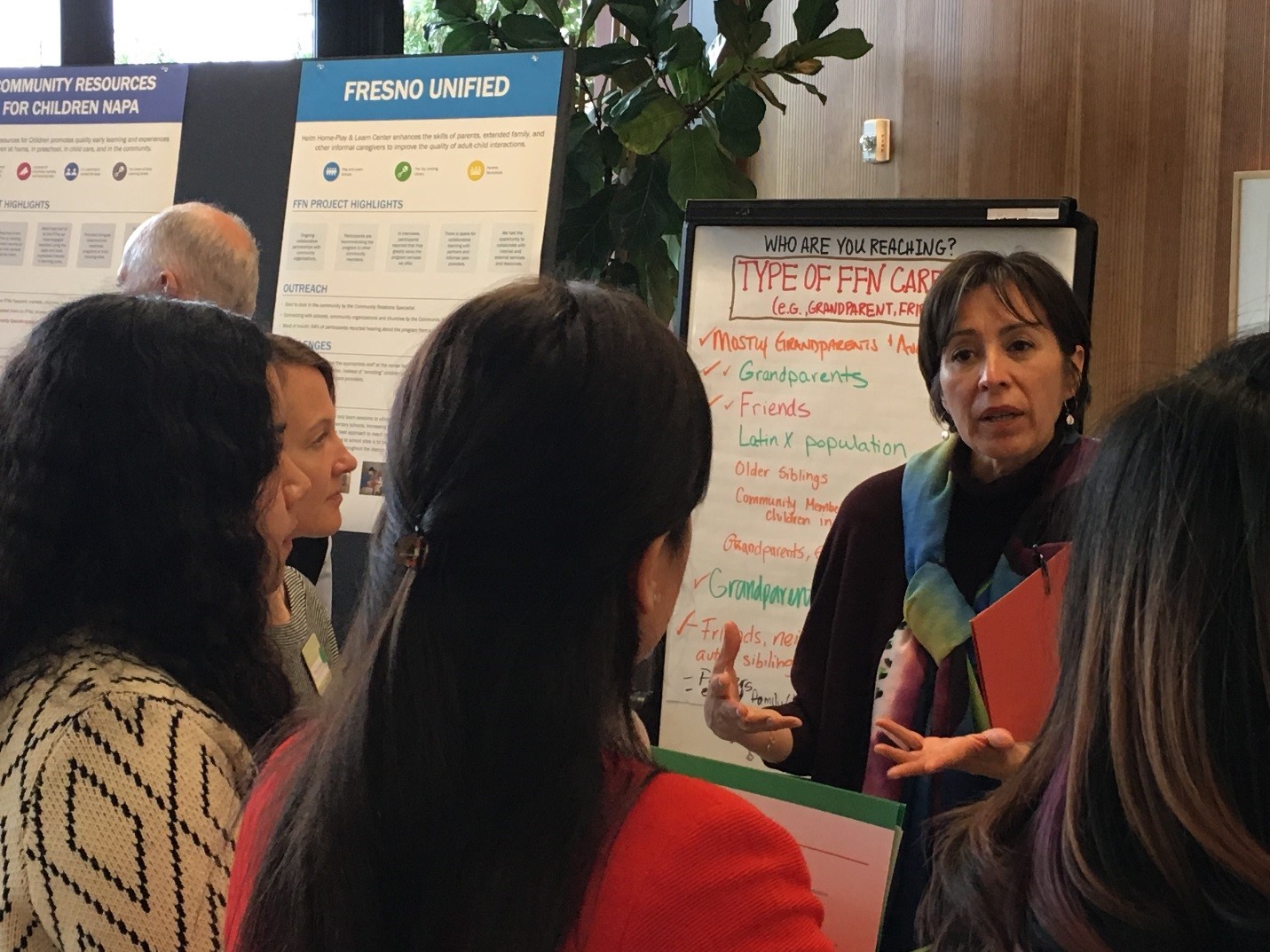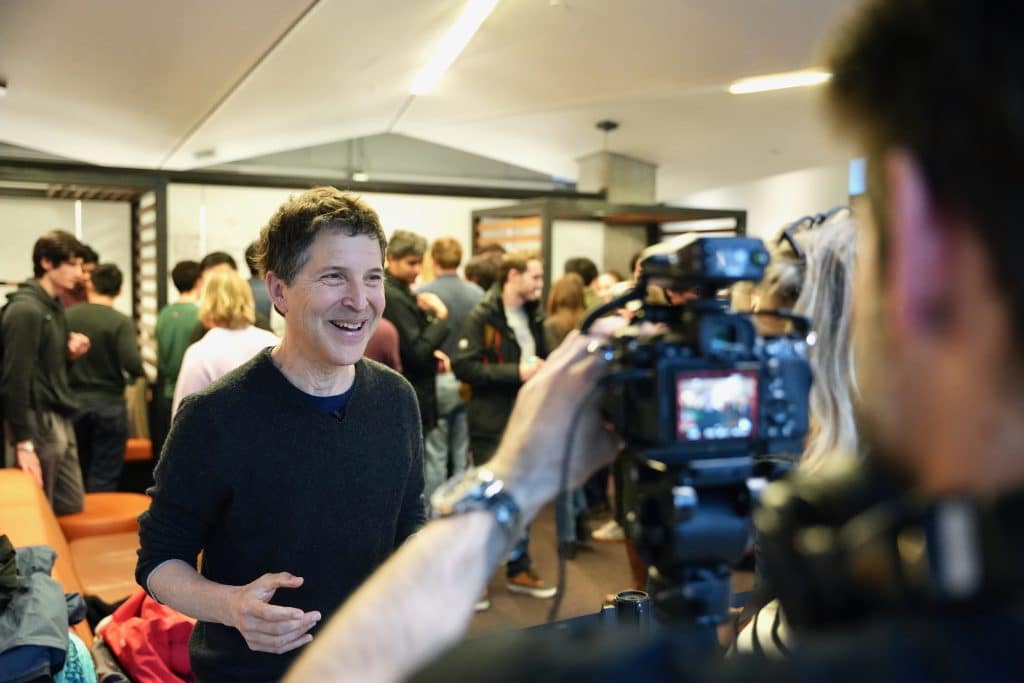We often talk about philanthropy’s convening power, and its ability to bring partners and grantees together to discuss issues, share lessons learned, and find points of consensus. However, we aren’t always clear about what an effective convening actually looks like. This spring, the Packard Foundation hosted a convening with grantees working to support informal care. The meeting was a success because everyone walked away with expanded networks, new insights, and ideas for tangible next steps. I thought it might be a good opportunity to share what made this convening effective.
The vast majority of children in California under two years of age are cared for by parents, extended family members, friends, and neighbors—what we in the early childhood field sometimes refer to as FFN caregivers, or informal caregivers. Here at the Packard Foundation, we believe that providing information to FFN caregivers and connecting them to resources and networks will help create rich learning experiences for the children in their care. We work with organizations across California that support this important group of caregivers. We started our work in this area by better understanding who FFN caregivers are, what they care about, and how to reach them. In the second phase of our strategy, informed by what we had learned, we funded two successive cohorts of grantees to test outreach methods and resources, in order to learn from those projects and to scale approaches that work.
Near the end of 2017, we realized that we needed a check-in with our second cohort of FFN grantees so we could make decisions about what looked promising and what our next steps would be. Our team decided to host a meeting where our FFN caregiver grantees could network and hear about each other’s work, and where we could learn from their projects to inform our strategy. So on March 20, we gathered 38 informal care stakeholders at the Packard Foundation.

Grantees discussed common challenges, such as how hard it is to help FFN caregivers understand the importance of their role in a child’s life beyond being an “auntie” or a neighbor. They also shared amazing stories, including an informal group of grandfathers who thought they were alone in their caregiving role until they met one another through a grantee organization, and decided to meet regularly. These rich discussions allowed these FFN leaders to build on each other’s work, and helped me understand where the Foundation can better support their efforts.
Looking back on it, there were several ingredients that made the gathering work for everyone, so I thought I’d share these tips and tricks to help inform anyone thinking about their next convening:
- Clarify your purpose. From the moment we reached out to participants, we were clear about why we were gathering and what our goals were: for grantees to meet one another, and for everyone to learn what was and wasn’t working for each project. This meant everyone knew what to expect when they arrived.
- Invite the right participants. It’s important to have the right people in the room. We made sure participants included not only the current FFN caregiver grantees, but also the first cohort of informal care grantees. We also invited other related Packard grantees, including our Starting Smart and Strong grantees working to support the adults in children’s lives in Fresno, San Jose, and Oakland, recognizing that they would have similar successes and challenges. We also included our partners who are applying some of the promising approaches to engaging FFN caregivers state-wide so that they could learn from our grantees’ experiences on the ground. To make sure we could get the full picture, we even invited the consultants working with our FFN grantees on communications, evaluation, and storytelling, as well as Packard Foundation staff who work closely with them. We wanted these stakeholders present to hear from the grantees and help suggest concrete solutions.

- Engage an experienced facilitator. To get the most out of the convening, we knew it was important to have a facilitator with a collaborative, dynamic approach help us prepare and keep us on track. I asked Engage R+D to help. Not only did they have significant experience in running workshops and convenings, but they were able to devote substantial time to planning the event, including designing and preparing materials and activities in advance. Engage R+D conducted interviews with grantees beforehand to help surface what they would be interested in addressing at the convening. This got everyone brainstorming ahead of time, so all participants were ready to dive in day-of.
- Plan worthwhile activities. Convening is also about picking the right activities to get people sharing and learning. Engage R+D designed activities that got people moving around the room and talking to new colleagues. For example, they organized a poster “gallery walk” that allowed all stakeholders to hear from the grantees about each other’s work through casual conversation and carefully-designed visuals. These posters also importantly relied on data collected from the grantees in advance, and presented success in a way that let the grantees define it themselves. This enabled us all to have rich discussions about what was and wasn’t working, and what might work better moving forward.

- Evaluate and learn. The learning didn’t end at the close of the meeting. The common themes, successes, and challenges surfaced at the convening helped me think through next steps in our grantmaking strategy. Engage R+D also followed up with participants after the convening with a survey. The results showed that participants found the convening to be very useful, but while they liked the poster walk, they also wished they’d had more time to hear from each grantee. Next time, we’ll refine our approach to better balance interaction and information sharing. We will also work with a subset of grantees as a “design group” to help plan the next convening so we can more fully meet the needs of our grantees.
In the end, convening takes a lot more than just organizing a meeting—it takes strategic planning, execution, and follow up. And while nobody can guarantee a successful convening, with careful preparation and the right ingredients, we can do our best to set ourselves up for success.









